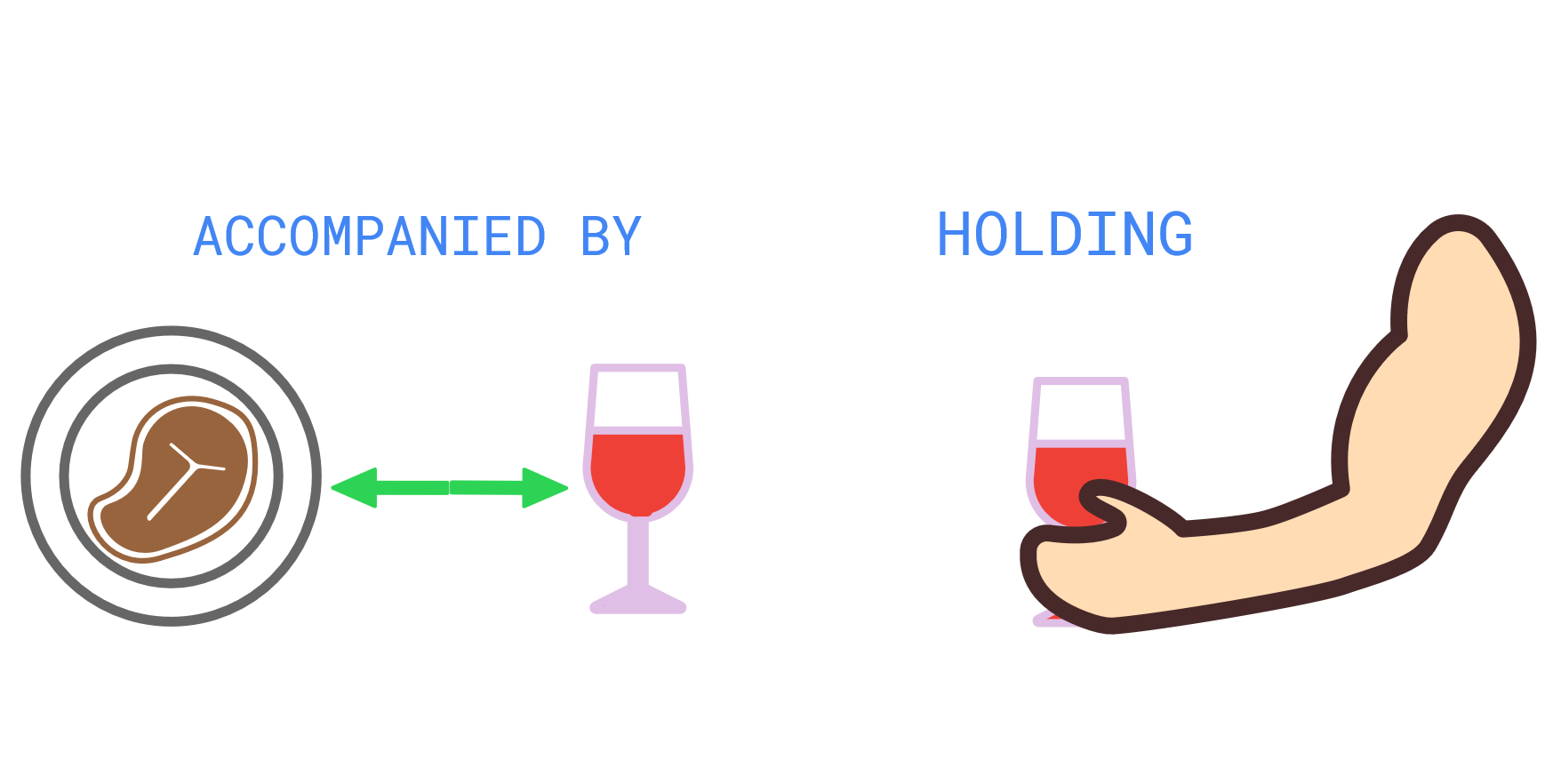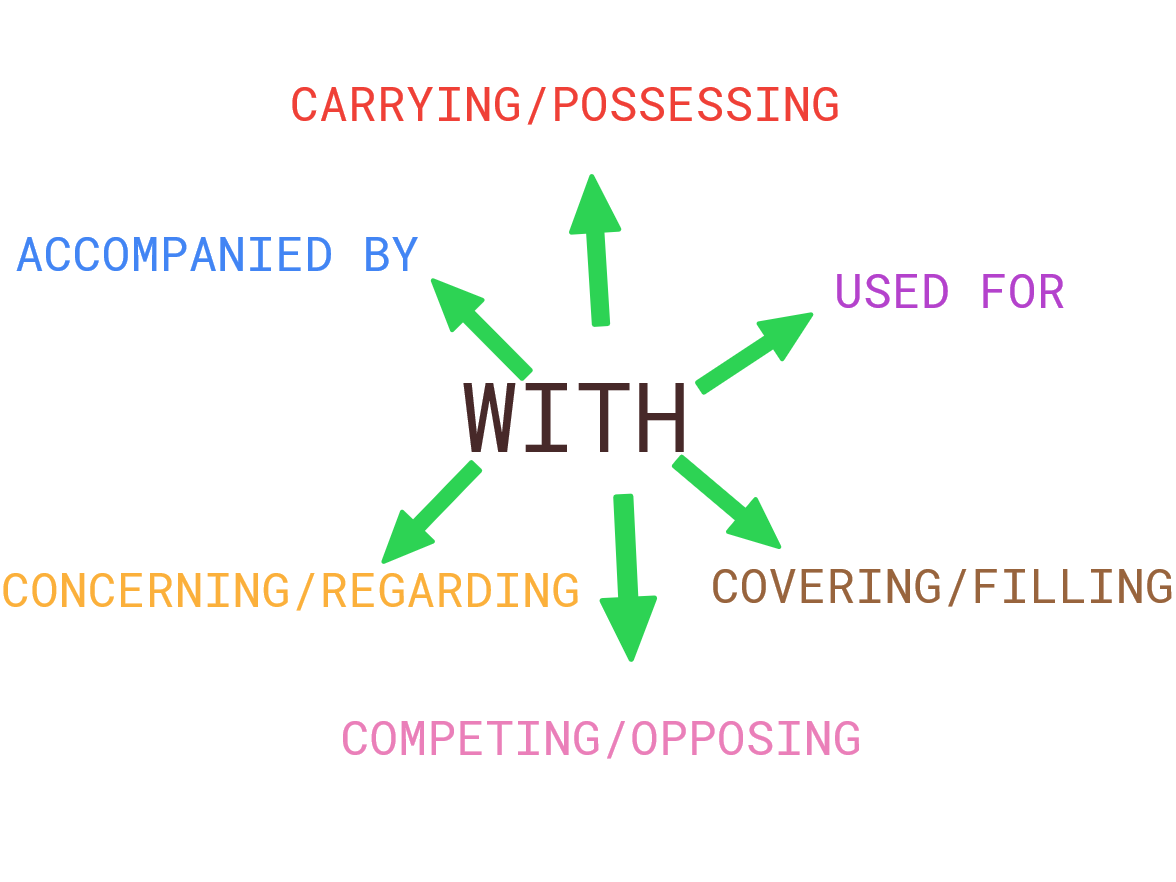How to Use With and Within - Prepositions
With is one of the most versatile prepositions in the English language, which makes it very useful, but also difficult to learn when it should be applied. There is, however, a common theme running through its various uses that can help us understand it better, and that is the idea that with essentially establishes a connection. That concept is one that should become clearer as we delve into its most common uses:
We use with to express that someone or something is accompanied or performing an action alongside another thing. Within this context, with can be seen as a shorter version of 'accompanied by', and applies to a number of different circumstances.
For example: "I live with my parents."
"I went to the cinema with my friends."
"She ate pasta with a glass of red wine."
With can be used to describe holding, carrying or being in possession of something.
For example: "My boss walked into the office with a briefcase."
"She stood in the corner of the room with a drink in her hand."
"He left the shop with his new shoes."
The difference between these first two uses of with can be better demonstrated in the following picture:

The idea of using with to express carrying or possessing something is not restricted to material things. For example, if you have an illness or infection of some kind then you can be said to be carrying or in possession of it, therefore you could accurately say: “I took the week off work with the flu.”
It can also be applied when describing the features of someone or something. For example, you might specify a house by noting something that distinguishes it from others: “It’s the house with the red door." In the case of a person, you might say, “He is a man with a brown moustache and large glasses”; or, “Look for the woman with long red hair.”
With can express making use of something to perform a task. In this context, with is generally interchangeable with using.
For example: "He cut the bread with a knife."
"She operated with a scalpel."
"I scored the goal with my head."
With can also describe the way in which a task was performed:
For example: "He cut the bread with caution."
"She operated with precision."
"I scored the goal with great skill."
With can be used to describe what covers or fills something.
For example: "The bag was stuffed with clothes."
"The mountain was covered with snow."
"The cup was filled with coffee."
With can express competition, opposition, or conflict against someone or something.
For example: "I had an argument with my boss."
"She played tennis with her sister."
"They went to war with their neighbouring country."
